As we discovered during a weekend visit recently, Volcanoes National Park on Hawaii’s Big Island is prone to rainy, windy weather. April and May are the rainiest months in Volcano, but even in the driest months, it rains at least 13 days out of the month.
This is actually lovely when you’re staying at a nearby Volcano Village rainforest retreat and soaking in your hot tub (highly recommended!), but can put a damper on hiking plans. Fortunately, you can experience much of the park without getting drenched. Here’s 7 things to do at Volcanoes National Park when it’s raining:

Chain of Craters Road Scenic Drive
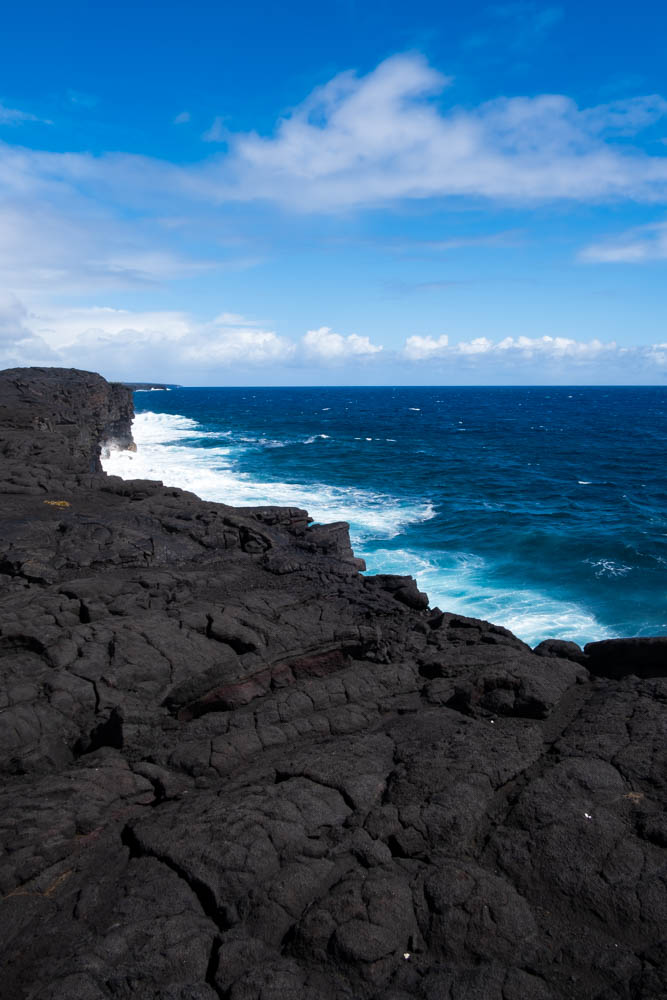
Chain of Craters Road scenic drive is by far the best rainy day activity in Hawaii Volcanoes National Park. This 19 mile road winds down towards the beach through old lava flows, craters, and black volcanic rock cliffs that meet the sea. While some older lava flows have been cut through to re-establish the road, it no longer extends all the way to the sea as it once did, because about 8 miles of the southern potion were covered by lava in the late 1980s.
It’s about half an hour each way, and a beautiful drive even in the rain. If you don’t mind getting drizzled on a little, there’s many pull-off overlooks along the way where you can jump out of the car and peer into the craters, or snap photos of beautiful vistas.
Closer to the end of the road, at lower elevation, the weather is often clearer, so you may be able to find some sunshine after all. Just watch out for fast-moving rain clouds; we took advantage of the sunny weather to take the short hike to the Pu’u Loa Petroglyphs, and got soaked on the hike back!
How to Get to Chain of Craters Road:
After entering Volcanoes National Park, keep an eye out on your left for Crater Rim Drive. It’s shortly after the entrance station and easy to drive past if you’re not looking for it. Crater Rim Drive will eventually end and you’ll turn left onto Chain of Craters Road. There’s ample signage, and you can’t really get lost once you make the first left turn.

Kilauea Overlook
There’s a small parking lot right in front of the Kilauea Overlook, making it a quick dash from your car in the rain. Depending on the weather and the state of the eruption, you may not see much of a lava glow, but who knows, you might catch a rainbow!
If you’re in the park later in the day, consider driving to the Kilauea Overlook to secure your spot for nighttime viewing, when the glow from the lava is most visible. Especially on the weekends, the overlook parking lot fills up quickly, leaving everyone else to park near the Military Camp and hike to the overlook.
How to Get to Kilauea Overlook:
After entering the park, continue on the main road all the way to Kilauea Overlook. You’ll pass the visitor center and steam vents on the way. The road is currently closed off past the overlook parking lot, so you literally can’t drive past it.

Mauna Loa Road Scenic drive
Just two miles down the road from Volcanoes National Park, Mauna Loa Road winds 11 miles up the volcano. The road stops at the trailhead that leads to the summit (a multi-day hike for the more intrepid), but you’ll see plenty along the drive.
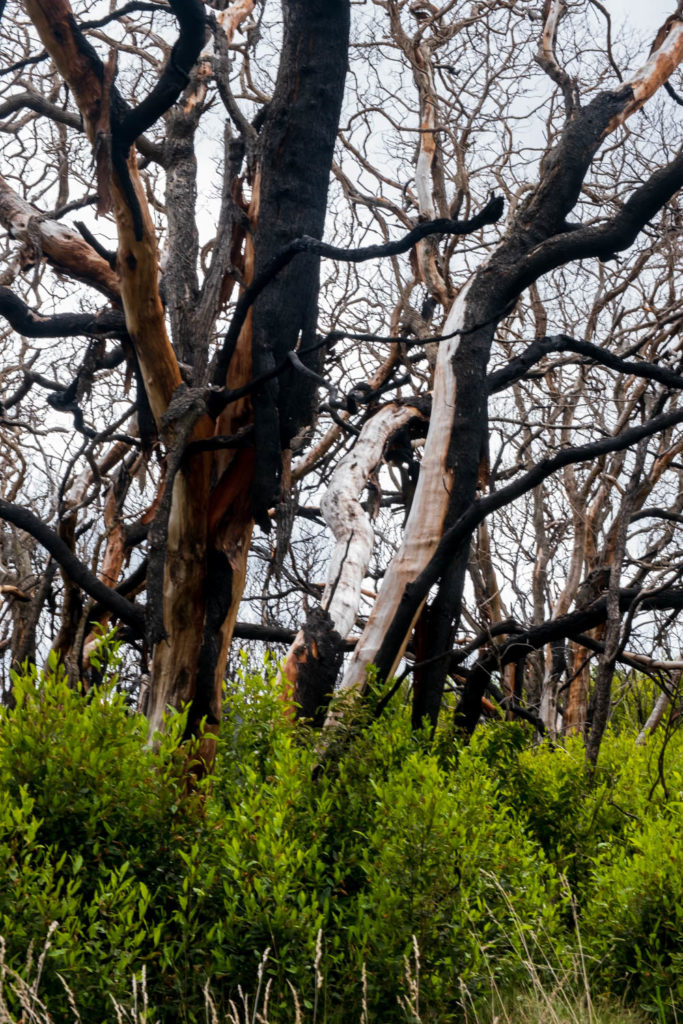
When you first pull off of Highway 11, you’ll see a sign on the right for the Lava Tree Molds. Take a short jaunt down that loop road to see deep burnt out holes where lava flowed over trees. There’s a small parking area, and the trees are close to the road, so it’s easy to jump out of the car for a quick look.
Mauna Loa Road is lined with trees–some dramatically burned from a 2018 wildfire– and old lava flows, and near the end, provides a view of the smoke plume coming from Kilauea’s eruption. On rainy days, views to Volcanoes National Park may be obscured, but it’s a fair trade-off for the atmospheric mist you’ll find on the drive up.
The road is paved, and not steep–you’ll do fine in a regular car. However, it’s not quite two lanes, so take it slow and move over for other cars.
How to Get to Mauna Loa Road:
Navigate to Bird Park (this is a trail part way up Mauna Loa Road, but Google sometimes gets confused if you just type in Mauna Loa Road). Or, if you’re coming from Volcanoes National Park, turn left out of the park, and drive about two miles down the road. You’ll see Mauna Loa Road on your right.

Volcano Art Center Gallery
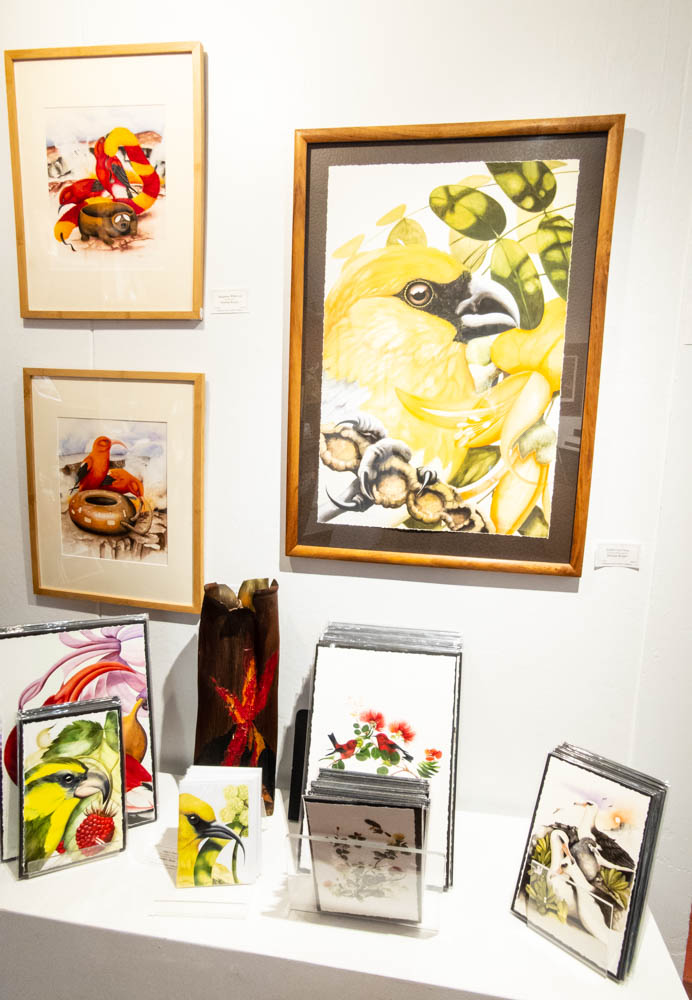
Rain or shine, the Volcano Art Center Gallery–right next to the visitors center– is worth a stop. It’s housed in a historic 1877 building that was once the Volcano House Hotel.
There’s a huge variety of art by local artists for sale here, and something for nearly every budget. I was immediately attracted to the large selection of ceramics, but there’s just as much original art (including the wonderful paintings of Hawaiian birds seen to the right), jewelry, sculpture, photography, bath and body, and more.
Of all the galleries in the Volcano area, this location in the park has the best selection. It was easy to start planning what I’d buy to decorate my imaginary Hawaiian vacation home!
How to Get to Volcano Art Center Gallery:
After entering Volcanoes National Park, continue on the main road. The gallery is just past the visitor center.
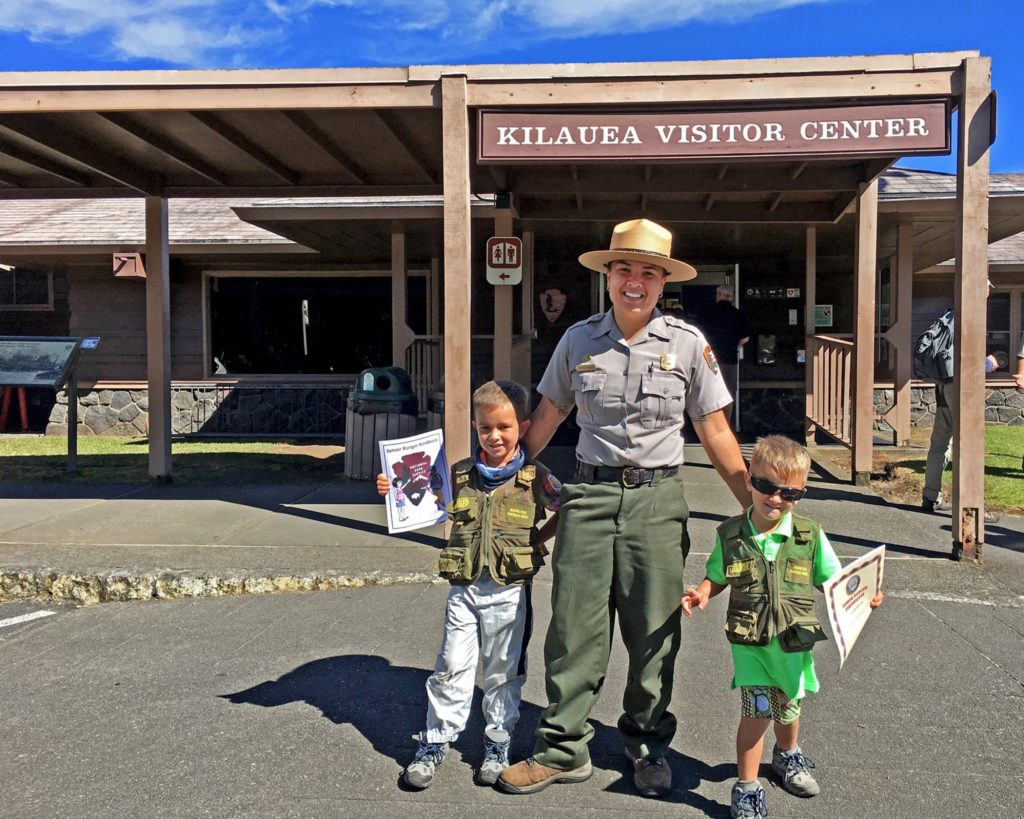
Kilauea Visitor Center
It can be easy to skip a stop at the visitor center when you’re eager to start seeing the park. Beyond being a great source of info on current eruptions, closures, etc, Kilauea Visitor Center has a nice lounging area, a video on the history of the park, and a shop that offers souvenirs and some basics to outfit yourself.
In non-Covid times, there’s also a regular schedule of tours, activities, and a junior ranger program for kids. Thing are changing every day, so be sure to stop in and ask what’s going on!
How to Get to Kilauea Visitor Center:
After entering Volcanoes National Park, continue on the main road. You can’t miss it!
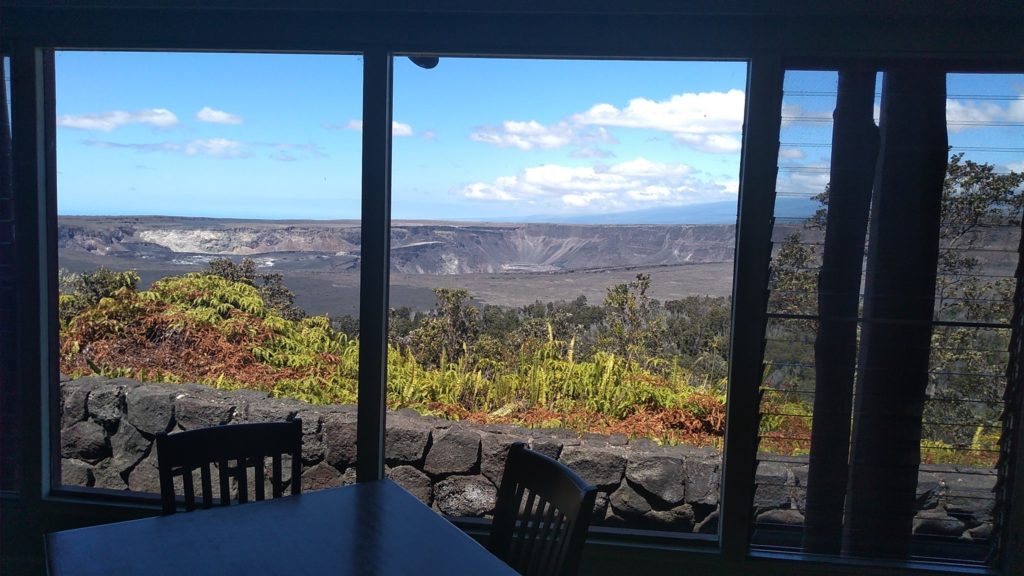
Dining with a View: The Rim at Volcano House
Why not grab lunch while you’re waiting for the weather to clear? There’s a couple options in the park, but The Rim at Volcano House is the clear winner with sweeping views of the Kilauea caldera and the Halema’uma’u Crater. The views may not be crystal clear when it’s raining, but worst case scenario, you’ll stay warm and dry, and get a view of misty ambiance outside.
Note that The Rim is currently temporarily closed due to Covid. They’ll hopefully be reopening soon, so check their status before you try to visit.
How to Get to The Rim at Volcano House:
After entering Volcanoes National Park, continue down the main road. Look for the Volcano House signs on the left, it’s a little before the visitor center.
Explore Volcano Village
Tiny Volcano Village is just 5 minutes outside the park, and provides some additional indoor activities (though it’s worth your time to explore even when it’s not raining). Here’s my favorites:
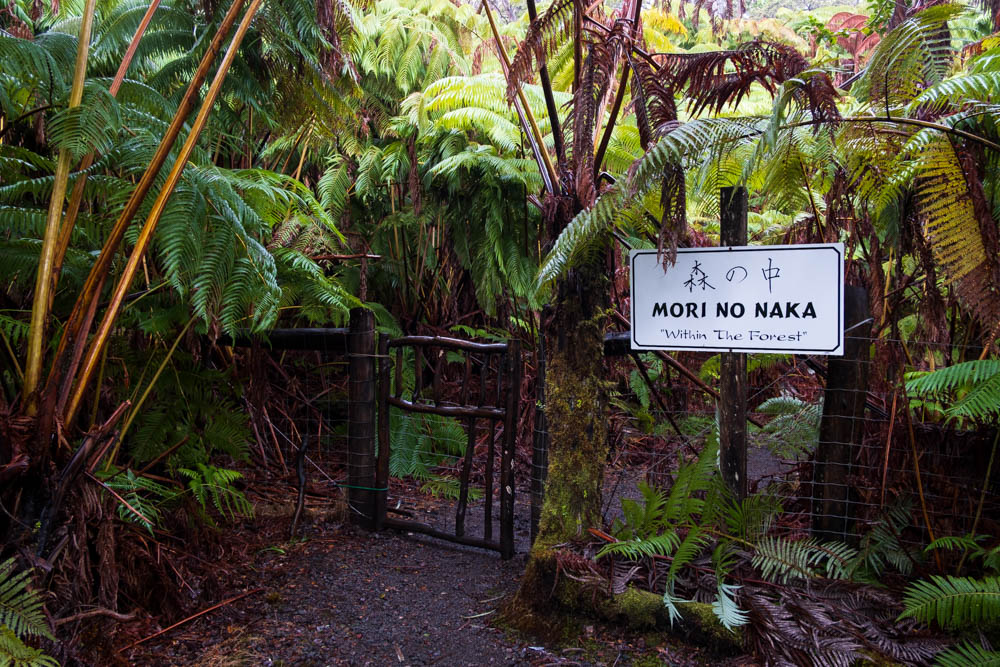
Volcano Art Center & the Mori no Naka Path through Niaulani Rainforest
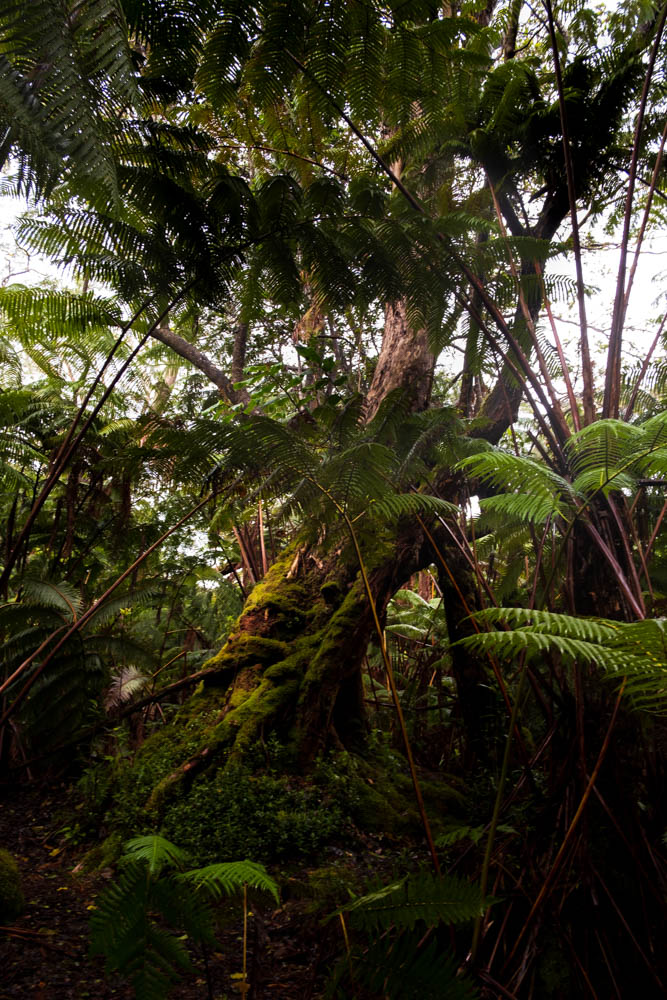
The Volcano Art Center features a gallery full of art from local artists and craftsmen, and offers cultural events and art classes. It’s worth stopping by to browse or pick up souvenirs at the gallery, or to see about classes.
But the real gem here is a small, carefully tended old-growth rainforest behind their gallery building. Experience Volcano calls Niaulani Rainforest “the best restored native rainforest in the state.”
Volcano Art center offers guided tours of Niaulani Rainforest, though you’re free to stop by anytime during open hours and walk the easy 1/4 mile loop path by yourself. The path–dubbed Mori No Naka, Japanese for “Within the Forest”– is easily accessible behind the gallery building. You’ll likely want an umbrella or raincoat if it’s raining, but won’t get that wet under the canopy if you brave the short path without rain gear. And truly, the rainforest is that much more beautiful when it’s raining.
How to Get to Volcano Art Center & Niaulani Rainforest:
Navigate to Volcano Art Center – Hale Ho’omana. The gallery is in the building on the right side of the parking lot, and the forest path is just behind the gallery building. The path is accessible by either walking around the building or exiting through the back door of the gallery.
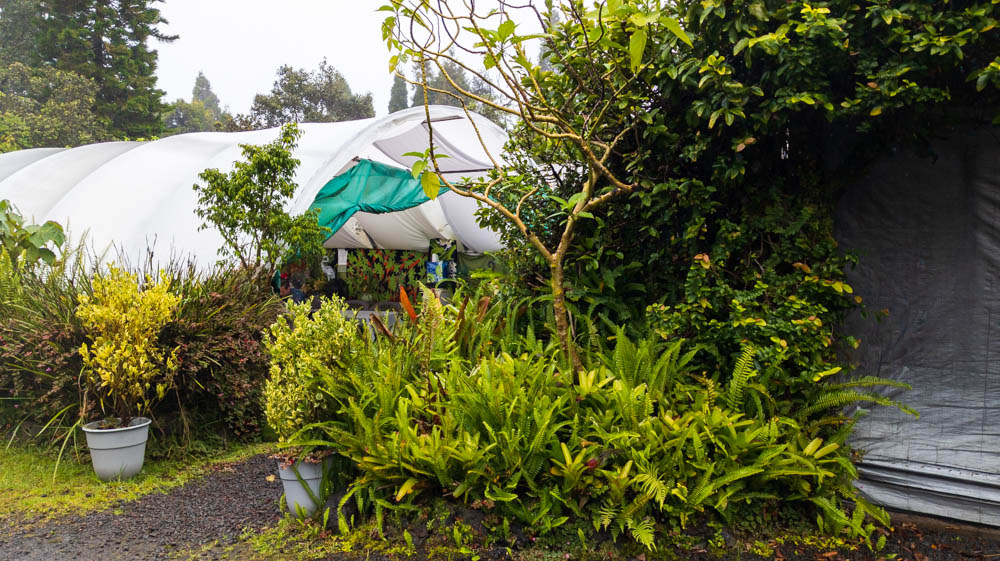
Volcano Garden Arts & Cafe Ono
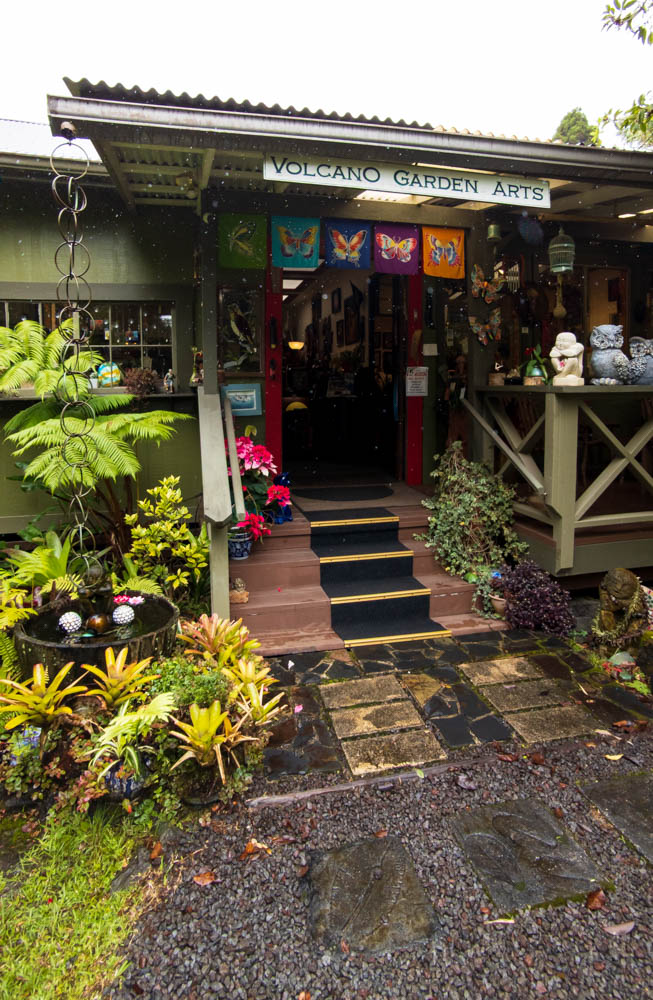
Set on an historic 1908 estate, this farmhouse constructed of California redwood now hosts the Volcano Garden Arts gallery. If the weather permits, you should stroll around the garden, but it’s worth a stop on a rainy day as well.
The on-site Cafe Ono serves “ecologically sound” vegetarian and vegan food (gluten-free options too!) that impressed even this non-vegetarian foodie. There’s indoor seating just off the Garden Arts gallery space, or head outside to eat in one of the greenhouse style tents and enjoy the lush gardens.
How to Get to the Volcano Garden Arts Center:
Navigate to Volcano Garden Arts Center.

Kilauea Lodge & Restaurant

This former YMCA camp built in 1938 is now a resort and restaurant. The lodge has some cute rooms if you’re staying in the area, but anyone can eat at the Kilauea Lodge Restaurant (reservations are recommended, and the food is very good!). The restaurant is housed in the large craftsman style lodge building, with a high beamed ceiling and a huge stone fireplace with a unique story.
With the vision of celebrating peace and unity, local YMCA leaders solicited plaques from international Rotary and Lion’s clubs, along with stones from US National Parks. The resulting Fireplace of Friendship incorporates donations from “100 clubs and individuals from across the world.” It’s such a cool, quirky piece of history!
